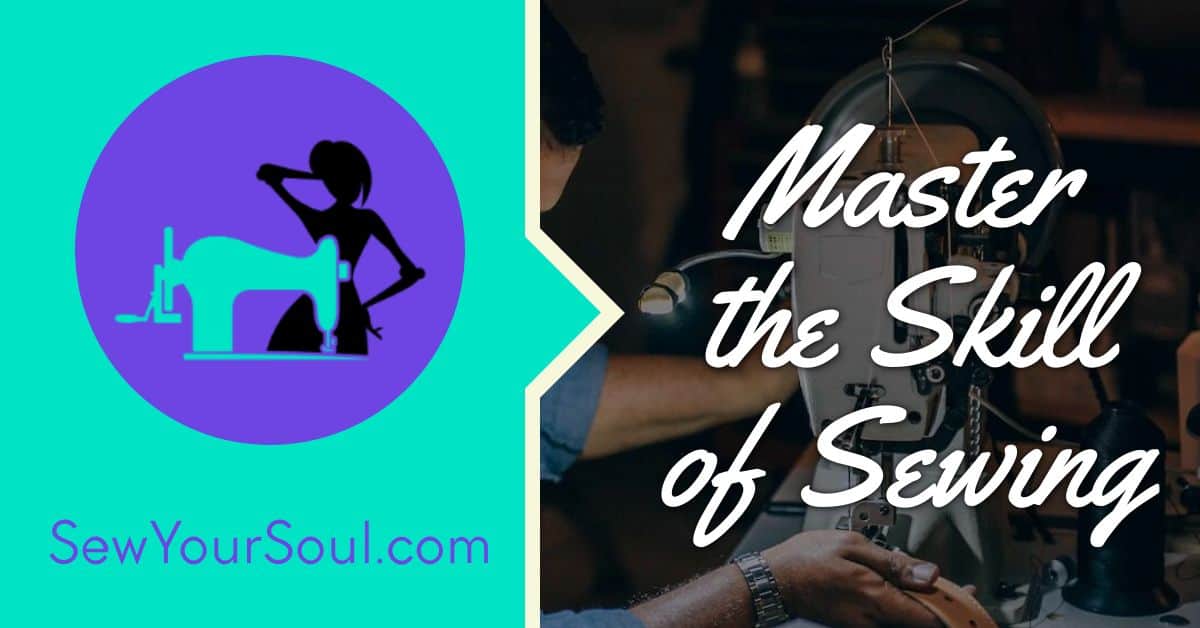As someone who loves to sew, finding the best sewing machine is crucial to achieving the results I want. But with so many options available, it can be overwhelming to choose the right one. In this article, I will share my experience and knowledge on how to find the best sewing machine for your needs.
Understanding sewing machines is the first step in finding the right one. There are two main types of sewing machines: mechanical and computerized. Mechanical sewing machines are operated manually and are best for basic sewing tasks, while computerized sewing machines are more advanced and can handle a wider range of sewing projects. It’s important to consider what kind of sewing you will be doing and choose a machine that suits your needs.
Essential accessories are also important to consider when choosing a sewing machine. Accessories like different types of presser feet, bobbins, and needles can make a big difference in the quality of your sewing. In addition, it’s important to choose a reputable brand and consider specialized sewing machines for specific projects. With these factors in mind, you can find the best sewing machine for your needs and start sewing with confidence.
Key Takeaways
- Understanding the different types of sewing machines is crucial in finding the right one for your needs.
- Essential accessories like presser feet and needles can make a big difference in the quality of your sewing.
- Choosing a reputable brand and considering specialized sewing machines can help you achieve the best results for specific projects.
Understanding Sewing Machines
As someone who has been sewing for years, I understand that finding the right sewing machine can be overwhelming. With so many options on the market, it can be challenging to know where to start. In this section, I will break down the basics of sewing machines to help you understand what to look for when searching for the best sewing machine for your needs.
Mechanical vs Computerized
When it comes to sewing machines, there are two main types: mechanical and computerized. Mechanical machines are straightforward and have basic features, making them the best sewing machine for beginners. They are also more affordable than computerized machines. On the other hand, computerized machines are more advanced and offer a wider range of features, such as programmable stitch patterns, automatic thread cutting, and speed control.
Features to Consider
When choosing a sewing machine, it is essential to consider the features that are most important to you. Some popular features to look for include:
- Speed Control: adjustable speed settings can help you sew at a comfortable pace.
- Design: a machine with a sleek design and intuitive interface can make sewing more enjoyable.
- Performance: a powerful machine can handle thick fabrics and multiple layers with ease.
- Durability: a sturdy machine with high-quality materials can last for years.
- Stitch Options: different machines offer different stitch options, from basic straight stitches to decorative stitches like zig-zag.
Types of Stitches
The types of stitches a machine can create are also important to consider. Most machines offer basic stitches like straight stitch, zig-zag, and buttonhole. Some machines also offer decorative stitches like scallop, feather, and satin. If you plan on doing a lot of decorative stitching, look for a machine that offers a wide range of options.
In summary, when choosing a sewing machine, consider your skill level, the features you need, and the types of stitches you want to create. Whether you choose a mechanical or computerized machine, make sure it is durable, powerful, and can handle the fabrics you plan to sew.
Essential Accessories
When it comes to sewing, having the right accessories can make all the difference in the world. Here are some of the essential accessories that I recommend for any sewing machine:
Needles and Bobbins
Having the right needles and bobbins is crucial for achieving the perfect stitch. It’s important to make sure you have the right size and type of needle for the fabric you’re working with. For example, a denim needle is thicker and stronger than a regular needle, making it perfect for sewing through thick layers of denim.
Bobbins are also important to have on hand. Make sure you have plenty of extra bobbins that are compatible with your sewing machine. It’s a good idea to wind several bobbins at once so that you don’t have to stop and wind a new one in the middle of a project.
Presser Feet
Presser feet are attachments that fit onto the bottom of your sewing machine’s presser bar. They help to guide the fabric through the machine and can be used for a variety of purposes. Some of the most common types of presser feet include:
- Straight Stitch Foot: This foot is used for sewing straight lines and is the most commonly used foot.
- Zigzag Foot: This foot is used for sewing zigzag stitches and other decorative stitches.
- Buttonhole Foot: This foot is used for making buttonholes of various sizes.
- Zipper Foot: This foot is used for sewing zippers onto fabric.
Additional Tools
In addition to needles, bobbins, and presser feet, there are a few other tools that I recommend having on hand:
- Threading Tools: These tools make it easier to thread your sewing machine, including a needle threader and tweezers.
- Seam Ripper: This tool is used for removing stitches if you make a mistake.
- Screwdriver: This tool is used for making adjustments to your sewing machine, such as changing the needle or presser foot.
- Extension Table: An extension table can be attached to your sewing machine to provide additional workspace for larger projects.
- Foot Pedal: A foot pedal is used to control the speed of your sewing machine.
By having these essential accessories on hand, you’ll be able to tackle any sewing project with confidence.
Sewing Machine Brands
When it comes to choosing the best sewing machine, you’ll want to consider the brand. Here are a few of the top brands and what they have to offer.
Juki
Juki is a well-known brand in the sewing world, and for good reason. They offer a wide range of machines, from industrial to home use. Their machines are known for their durability and precision, making them a great choice for serious sewists. One of their best sewing machines is the Juki HZL-F600, which has a large variety of stitches and is great for quilting.
Brother
Brother is another popular brand that offers a variety of machines at different price points. One of their best sewing machines is the Brother CS7000X, which is perfect for beginners. It’s easy to use and comes with a lot of features, including 70 built-in stitches and a drop-in bobbin system. For those looking for a more advanced machine, the Brother XR9550 is a great choice. It has a large LCD screen, 165 built-in stitches, and a wide table for larger projects.
Singer
Singer is a brand that has been around for over 160 years, and they continue to produce quality machines. Their machines are known for their durability and ease of use. One of their best sewing machines is the Singer Quantum Stylist 9960, which has a whopping 600 built-in stitches and comes with a lot of accessories. For those looking for a heavy-duty machine, the Singer Heavy Duty 4452 is a great choice. It can sew through thick fabrics and has a fast sewing speed.

Overall, these brands offer some of the best sewing machines on the market. Whether you’re a beginner or an experienced sewist, there’s a machine out there for you.
Specialized Sewing Machines
When it comes to sewing machines, there are a variety of specialized machines that are designed for specific tasks. In this section, I will cover three types of specialized sewing machines: quilting machines, embroidery machines, and serger machines.
Quilting Machines
Quilting machines are designed for quilters who want to create beautiful, intricate quilts. These machines have larger harp spaces, which means that there is more room to maneuver the fabric while quilting. They also have a walking foot, which helps to move the fabric through the machine evenly.
If you are a quilter, you may want to consider a sewing and quilting machine. These machines are designed to do both tasks, so you don’t need to buy two separate machines. Look for a machine with a free-motion quilting foot, which will allow you to move the fabric in any direction you want.
Embroidery Machines
« Best Computerized Embroidery Machines: Top Picks for 2023
Brother CS6000i Sewing Machine: The Perfect Companion for Your Sewing Needs »
Embroidery machines are perfect for those who love to add decorative touches to their sewing projects. These machines can create intricate designs and patterns on fabric, and they come with a variety of built-in designs.
When choosing an embroidery machine, consider the size of the embroidery area. If you plan to do larger embroidery projects, you will need a machine with a larger embroidery area. You should also look for a machine with a USB port, so you can easily transfer designs from your computer to the machine.
Serger Machines
Serger machines, also known as overlock machines, are designed to finish edges and seams. These machines create a professional-looking finish on your sewing projects, and they can also be used to create decorative edges.
When choosing a serger machine, look for one with differential feed. This feature helps to prevent stretching and puckering of the fabric. You should also consider the number of threads the machine can handle. A four-thread machine is a good choice for most projects, but if you plan to do more complex projects, you may want a machine with more threads.
Overall, specialized sewing machines can make your sewing projects easier and more enjoyable. Consider your specific needs and choose a machine that will help you achieve your goals.
Sewing Machine Maintenance
As a sewing enthusiast, I know the importance of taking care of my sewing machine. Proper maintenance ensures that my machine runs smoothly and lasts for years to come. Here are some tips that I follow to keep my sewing machine in top shape.
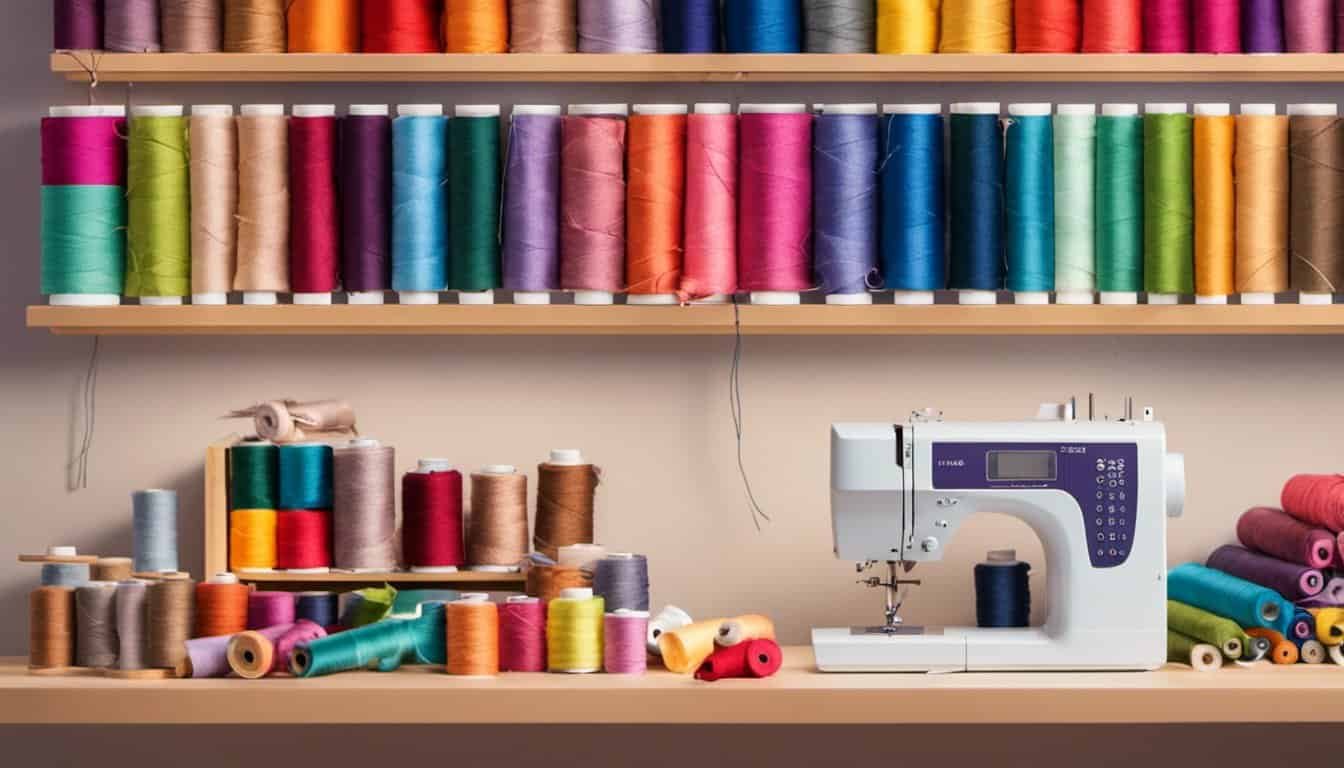
Cleaning
Regular cleaning is essential to keep your sewing machine running smoothly. I like to clean my machine after every project to remove any lint or dust that may have accumulated. To clean my machine, I use a soft brush to gently sweep away any debris from the feed dogs, bobbin area, and needle plate. I also use a lint roller to remove any remaining lint.
Oiling
Proper lubrication is crucial to keep your sewing machine running smoothly. I like to oil my machine after every 8-10 hours of use. To oil my machine, I follow the instructions in the manual and apply a drop of oil to the designated areas. Over-oiling can cause more harm than good, so be sure to use only the recommended amount of oil.
Thread Tension
Correct thread tension is essential for even stitches. If your stitches are too loose or too tight, it may be a sign that your thread tension needs adjustment. Refer to your manual to learn how to adjust the thread tension on your machine.
Feed Dogs
The feed dogs are the small, jagged teeth that move the fabric through the machine. If the feed dogs are not working properly, your fabric may not feed through the machine evenly. To ensure that your feed dogs are working correctly, check that they are clean and not bent or damaged.
Top-Loading Bobbin
If your sewing machine has a top-loading bobbin, it’s essential to keep it clean and free of debris. A dirty bobbin can cause your machine to jam or produce uneven stitches. To clean your bobbin area, remove the bobbin case and brush away any debris. Be sure to replace the bobbin case correctly to prevent any issues.
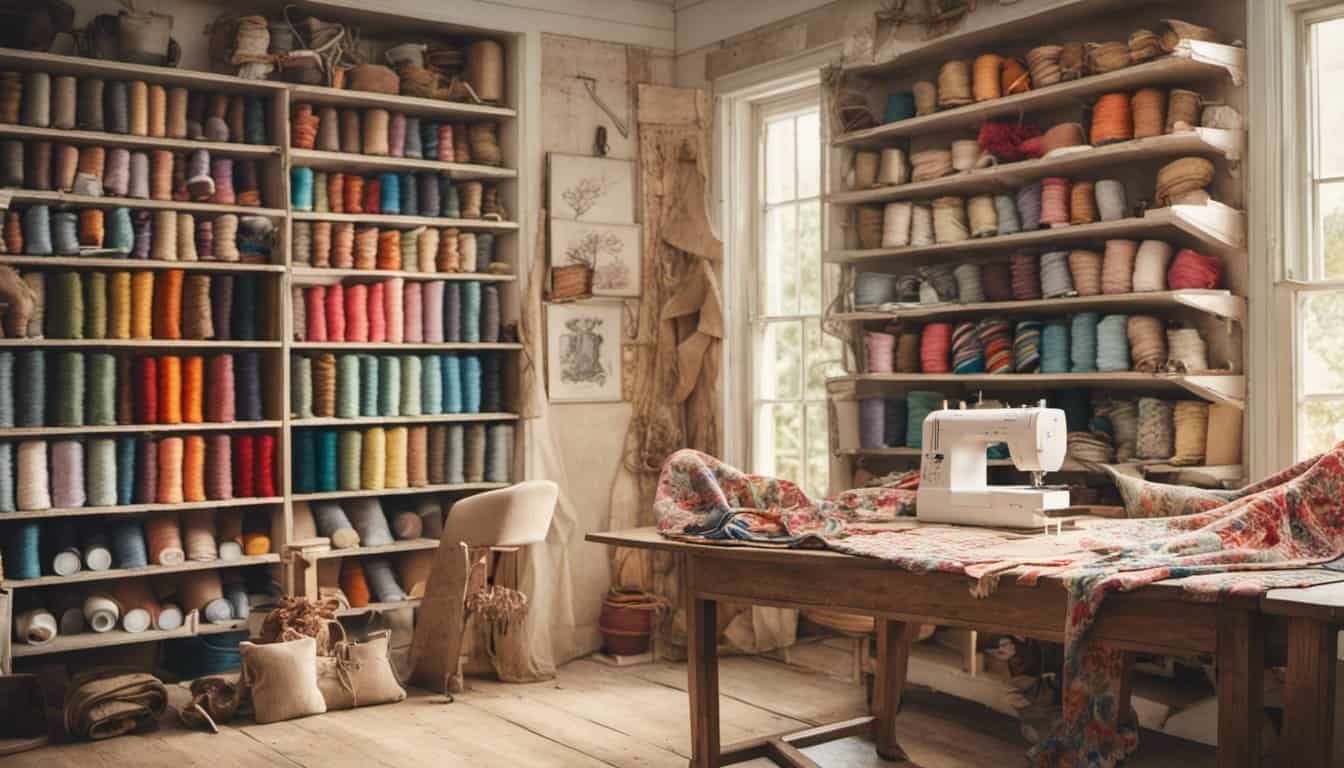
By following these simple maintenance tips, you can keep your sewing machine running smoothly and producing beautiful stitches for years to come.
Sewing Different Materials
When it comes to sewing, not all materials are created equal. Different fabrics require different techniques and equipment to achieve the best results. In this section, I will discuss some tips and tricks for sewing various materials, including denim, leather, silk, chiffon, and heavy-duty fabrics.
Sewing Denim and Leather
Denim and leather are both sturdy materials that require a heavy-duty sewing machine to handle the thickness and density of the fabric. When sewing denim, it’s important to use a denim needle and heavy-duty thread to prevent the needle from breaking. Additionally, you may need to adjust the tension on your machine to accommodate the thickness of the fabric. When sewing leather, it’s important to use a leather needle and special leather thread. You may also want to use a walking foot to prevent the leather from slipping while sewing.
Sewing Silk and Chiffon
Silk and chiffon are delicate fabrics that require a gentle touch when sewing. It’s important to use a fine needle and lightweight thread to prevent damage to the fabric. Additionally, you may want to use a stabilizer or tissue paper to prevent the fabric from puckering or stretching while sewing. When hemming silk or chiffon, a rolled hem is a great option for achieving a clean, professional look.
Sewing Heavy Duty Materials
When sewing heavy-duty materials such as upholstery fabric, it’s important to use a heavy-duty sewing machine with a strong motor and sturdy frame. You may also want to use a heavy-duty needle and thread to prevent breakage. Additionally, you may need to adjust the tension on your machine to accommodate the thickness of the fabric. When sewing upholstery fabric, it’s important to use a longer stitch length to prevent the seams from ripping under stress.
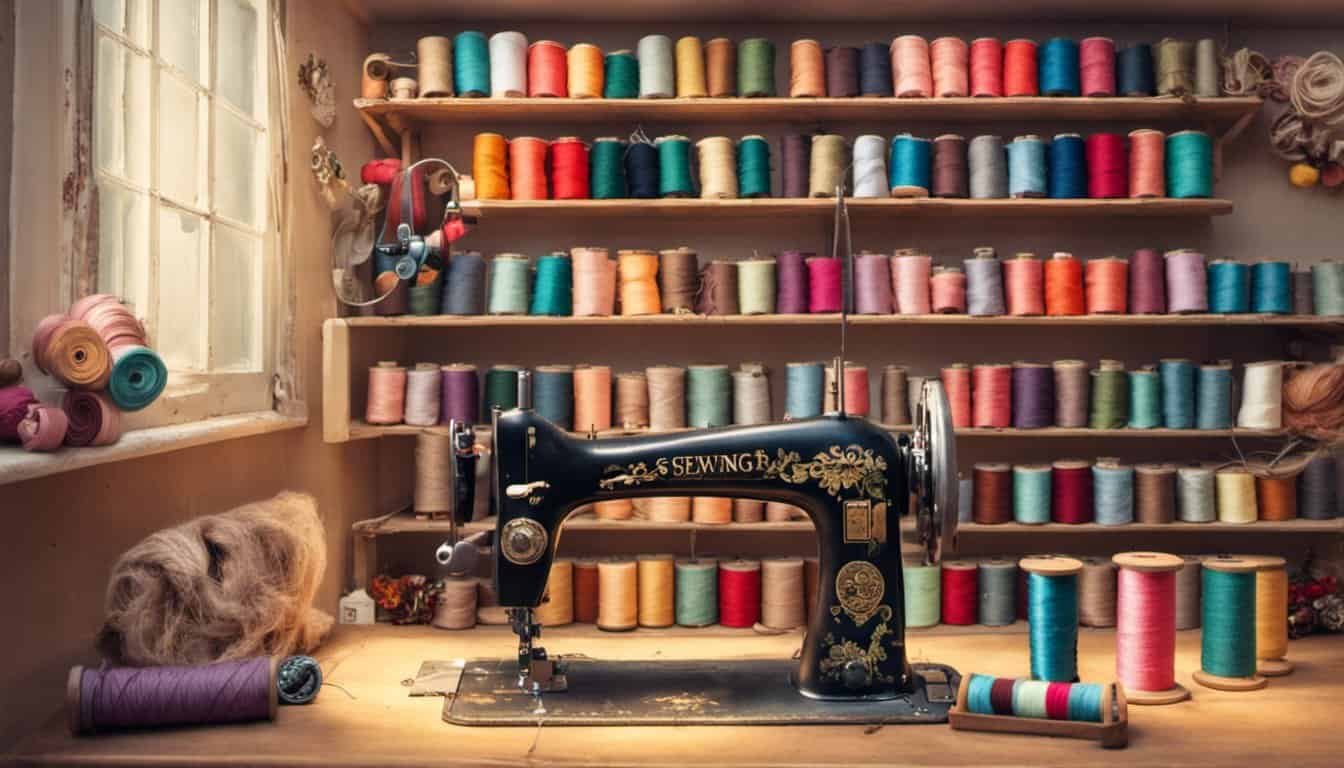
In conclusion, sewing different materials requires different techniques and equipment. By following these tips and tricks, you can achieve professional-looking results no matter what fabric you are working with.
Advanced Sewing Techniques
As a professional tailor, I have learned many advanced sewing techniques that can take your sewing skills to the next level. Here are some tips and tricks that can help you achieve the perfect finish on your garments.
Buttonholes and Zippers
Buttonholes and zippers are essential elements in garment construction. To create a perfect buttonhole, use a buttonhole foot and adjust the stitch length and width according to the size of the button. You can also use a stabilizer to keep the fabric from puckering.
When it comes to zippers, a walking foot can help keep the layers of fabric from shifting. Sew the zipper in place using a zipper foot, and then topstitch along the edges for a professional finish.
Hems and Cuffs
Blind hems are a great way to create a clean finish on hems and cuffs. Fold the hem or cuff up and press it in place. Then, fold the hem or cuff back down, creating a small fold. Sew along the folded edge, catching just a tiny bit of the garment fabric with each stitch.

For a more decorative finish, try using a twin needle. This will create two parallel lines of stitching on the right side of the fabric and a zigzag stitch on the wrong side.
Decorative Stitches
Decorative stitches can add a unique touch to your garments. Experiment with different stitch patterns and thread colors to create a custom look. Use a stabilizer to keep the fabric from puckering and test the stitch on a scrap piece of fabric before sewing on your garment.
Remember, practice makes perfect! These advanced sewing techniques may take some time to master, but with patience and practice, you can achieve a professional finish on all of your garments.
Investing in a Sewing Machine
As someone who loves to sew, I know the importance of investing in a good sewing machine. It’s not just about having a machine that can sew straight lines, but also about having one that can handle different fabrics, has advanced features, and is built to last. Here are some things to consider when investing in a sewing machine:
Value
When it comes to sewing machines, you get what you pay for. While it may be tempting to go for the cheapest option, investing in a higher-quality machine will pay off in the long run. Look for a machine that has a good balance of features and price. You don’t want to overspend on features you won’t use, but you also don’t want to skimp on important features.

Investment
A sewing machine is an investment, and it’s important to choose one that will last. Look for a machine that has metal parts, as they are more durable than plastic parts. Also, consider the warranty and customer service offered by the manufacturer. A good warranty and responsive customer service can save you time and money in the long run.
Advanced Machine
If you’re an experienced sewer or plan on tackling more advanced projects, consider investing in a machine with advanced features. Look for a machine that has a variety of stitches, adjustable stitch length and width, and a free arm. These features will give you more flexibility and allow you to tackle a wider range of projects.
Metal Parts
As mentioned earlier, machines with metal parts are more durable than those with plastic parts. Look for a machine that has a metal frame, as this will provide stability and prevent the machine from vibrating during use. A metal frame will also ensure that the machine lasts longer and can handle heavier fabrics.
Investing in a sewing machine is a big decision, but it’s one that will pay off in the long run. By considering the value, investment, advanced features, and metal parts of a machine, you can choose one that will meet your needs and last for years to come.
Learning to Sew
When I first started sewing, I was overwhelmed with the number of sewing machines available in the market. I had no idea where to start, what features to look for, or which machine would be suitable for me. However, with some research, I was able to find the perfect sewing machine for my needs.

If you’re new to sewing, it’s important to start with the basics. You can begin by reading the instruction manual that comes with your sewing machine. The manual will provide you with information on how to set up your machine, how to thread the needle, and how to use the different stitches.
Another great way to learn to sew is by taking sewing classes. You can find classes at your local community center, craft store, or even online. Sewing classes are a great way to learn new techniques, get tips and advice from experienced sewers, and meet other people who share your passion for sewing.
When it comes to sewing needs, it’s important to have the right tools and supplies. You’ll need a good pair of scissors, pins, needles, and thread. You may also want to invest in a rotary cutter, cutting mat, and ruler. Having the right tools will make sewing much easier and more enjoyable.
If you’re interested in sewing home decor items, there are many projects you can try. You can make curtains, pillows, table runners, and more. Home decor projects are a great way to personalize your space and add your own unique touch.
In conclusion, learning to sew can be a fun and rewarding experience. By starting with the basics, taking classes, having the right tools, and trying out different projects, you’ll be on your way to becoming a skilled sewer in no time.
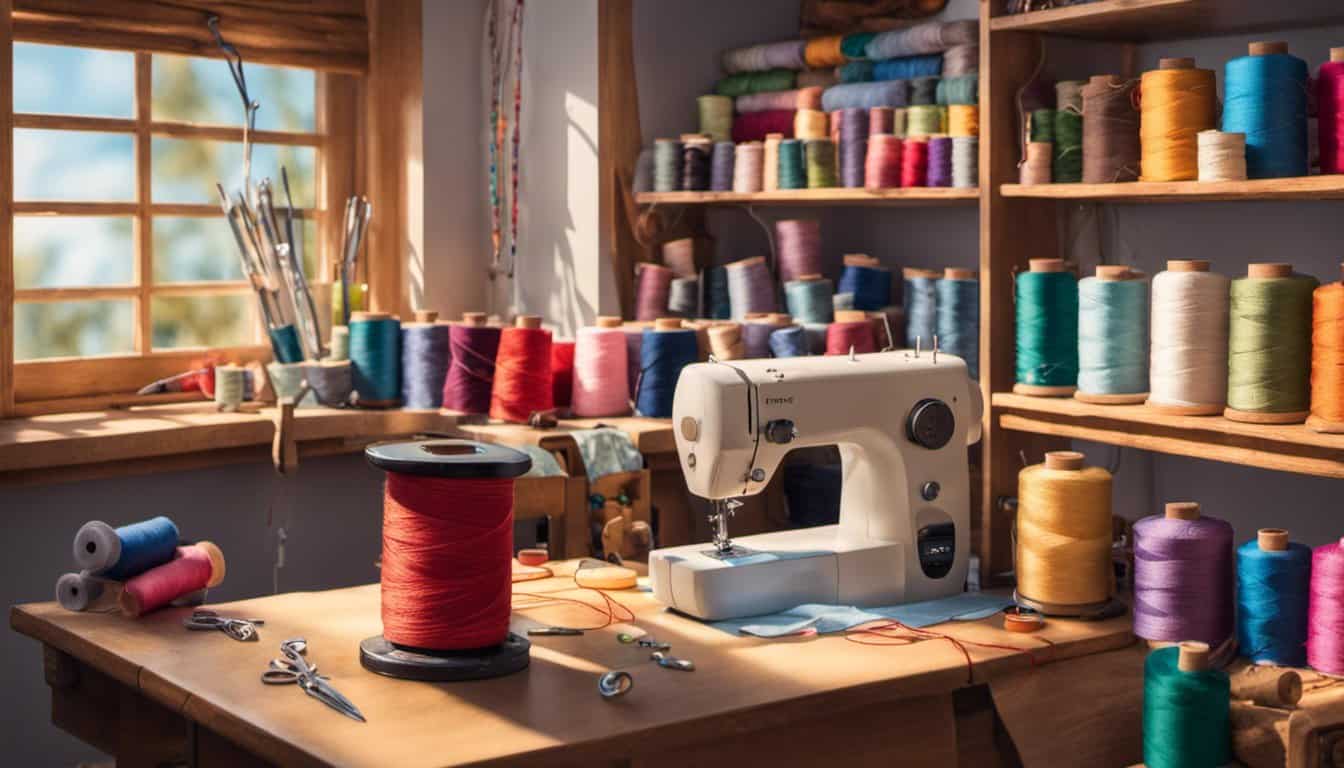
Sewing for Kids
As a parent, I know how important it is to encourage creativity in children. Sewing is a wonderful hobby that can help kids develop their motor skills, hand-eye coordination, and patience. However, finding the right sewing machine for kids can be a challenge. Here are some things to consider when looking for a sewing machine for your child:
Size and Weight
Kids’ sewing machines should be lightweight and compact, so they can easily be moved around and stored away. Look for machines that are small enough to fit on a table or desk, but not so small that they are difficult to use. Some machines come with carrying cases, which can be useful if your child wants to take their machine to sewing class or a friend’s house.
Safety Features
Safety is always a concern when it comes to kids’ toys and equipment. Look for sewing machines that have safety features such as finger guards and automatic shut-off switches. Make sure that the machine is easy to use and does not require too much force to operate.
Ease of Use
Kids’ sewing machines should be easy to use, with clear instructions and simple controls. Look for machines that have large, easy-to-read dials and buttons, and that come with a variety of stitch options. Some machines also come with instructional DVDs or online tutorials, which can be helpful for kids who are just starting out.
Price
Sewing machines for kids can range in price from under $50 to several hundred dollars. While it may be tempting to go for the cheapest option, keep in mind that a higher-priced machine may be more durable and have more features. Consider your child’s level of interest in sewing and how much use they are likely to get out of the machine before making a purchase.

Overall, finding the right sewing machine for your child can be a fun and rewarding experience. By considering factors such as size, safety, ease of use, and price, you can help your child develop a lifelong love of sewing.
Buying Online vs In-Store
When it comes to buying a sewing machine, you have the option to buy online or in-store. Each option has its advantages and disadvantages, so it’s important to weigh them carefully before making a decision.
Buying Online
Buying a sewing machine online can be a convenient option for many people. You can shop from the comfort of your own home, and there are often more options available online than in-store. Online retailers like Amazon also often have competitive prices and offer free shipping.
However, there are some downsides to buying a sewing machine online. You can’t physically see or touch the machine before you buy it, which can make it difficult to know if it’s the right fit for you. Additionally, if you have any questions or issues with the machine, it can be more difficult to get help or support from the retailer.
Buying In-Store
Buying a sewing machine in-store has its own advantages. You can physically see and touch the machine, which can give you a better idea of how it works and if it’s the right fit for you. Additionally, if you have any questions or issues with the machine, you can often get help and support from the store staff.

However, buying a sewing machine in-store can also have some downsides. There may be fewer options available than online, and prices may be higher. Additionally, you may have to travel to multiple stores to find the machine you want, which can be time-consuming.
Ultimately, whether you choose to buy online or in-store will depend on your personal preferences and needs. If you value convenience and a wide selection, buying online may be the better choice. But if you want to physically see and touch the machine before you buy it, buying in-store may be the way to go.
Conclusion
After researching and analyzing the best sewing machines on the market, I have come to the following conclusions.
When choosing a sewing machine, it is important to consider your skill level, sewing needs, workspace, and budget. If you are a beginner, a basic mechanical machine with a few stitch options may be sufficient. However, if you are more experienced or plan on using your machine for more complex projects, a computerized machine with a variety of stitch options and features may be worth the investment.
Some of the best sewing machines currently available include the Brother XR9550, Singer M3500, Janome Magnolia 7318, Juki HZL-LB5100, and Bernina 530. These machines offer a range of features and stitch options to suit different sewing needs and skill levels.
When purchasing a sewing machine, it is also important to consider the brand and customer support. Singer, Brother, and Janome are popular brands with a good reputation for quality and customer service. However, other brands such as Juki and Bernina also offer high-quality machines with unique features and capabilities.
Overall, finding the best sewing machine for your needs requires careful consideration and research. By taking the time to evaluate your sewing needs and budget, and by researching the available options, you can find a machine that will help you create beautiful and professional-quality projects for years to come.
Frequently Asked Questions
How can I determine which sewing machine is right for me?
Choosing the right sewing machine can be overwhelming, but it doesn’t have to be. Start by considering your sewing needs and experience level. If you’re a beginner, you may want to choose a basic mechanical sewing machine with easy-to-use features. If you’re an experienced sewer, you may want a computerized machine with advanced features and functions. Additionally, consider the types of projects you’ll be working on and the materials you’ll be using. Researching and comparing different sewing machine models can also be helpful.
What are the most reliable sewing machine brands?
According to sewing experts and consumer reviews, some of the most reliable sewing machine brands include Bernina, Singer, Husqvarna Viking, Pfaff, Brother, and Janome. These brands are known for their quality, durability, and innovative features. However, keep in mind that even the most reliable brands may have occasional mechanical issues.
What type of sewing machine is best for quilting?
When it comes to quilting, a sewing machine with a large throat space and a strong motor is essential. Look for a machine with a wide table, adjustable presser foot pressure, and a walking foot. Some of the top-rated sewing machines for quilting include the Brother PQ1500SL, Janome Memory Craft 6700P, and Juki TL-2010Q.
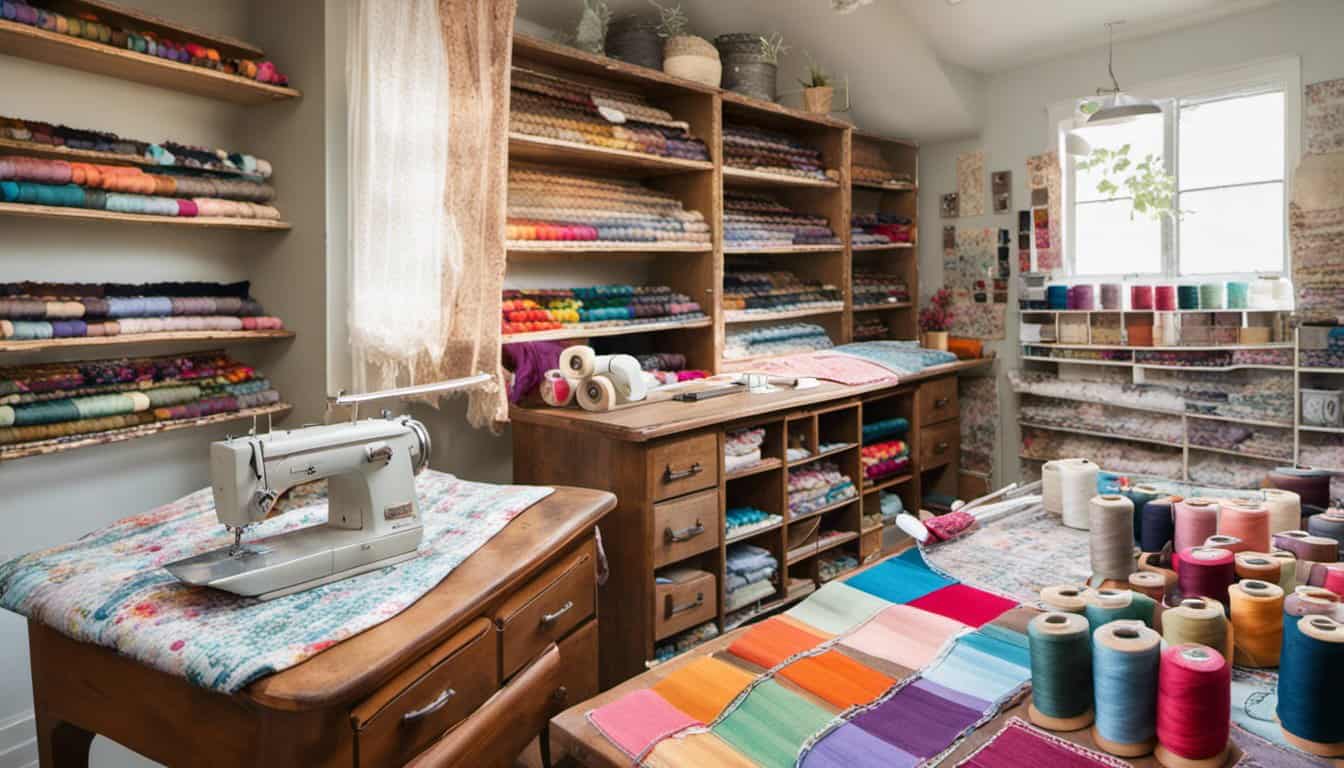
What are the top-rated sewing machines for advanced sewers?
Advanced sewers may want a sewing machine with advanced features such as automatic thread tension, programmable stitch settings, and embroidery capabilities. Some of the top-rated sewing machines for advanced sewers include the Bernina 880 Plus, Janome Horizon Memory Craft 9450 QCP, and Singer Quantum Stylist 9960.
Which sewing machines have the fewest mechanical problems?
While even the most reliable sewing machines may have occasional mechanical issues, some models are known for their durability and longevity. According to consumer reviews, some of the sewing machines with the fewest mechanical problems include the Bernina 880 Plus, Janome Memory Craft 6700P, and Pfaff Creative 4.5.
What are the best professional-grade sewing machines on the market?
Professional-grade sewing machines are designed for heavy use and are equipped with advanced features and functions. Some of the best professional-grade sewing machines on the market include the Juki TL-2010Q, Bernina 880 Plus, and Janome Memory Craft 9450 QCP. These machines are known for their durability, precision, and versatility.

